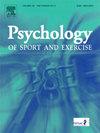Beyond age and expertise: Emotional intelligence and heart rate variability predict decision-making under risk in mountain-guide population
IF 3.3
2区 心理学
Q2 HOSPITALITY, LEISURE, SPORT & TOURISM
引用次数: 0
Abstract
In high mountain environments, mountaineers regularly face decisions that put the physical integrity of all group members at risk, particularly in avalanche-prone terrain. These decisions, where consequences and probabilities are known, is called decision-making under risk. While knowledge and skills form the foundation of avalanche safety training, age and expertise may not be the only predictive factors. This study explored the influence of emotional intelligence (EI), vagally mediated heart rate variability (vmHRV) and inhibitory control on decision-making, in addition to age and expertise. Seventy male mountaineers (15–60 years) completed i) the Cambridge Gambling Task, a decision-making task that measured risk adjustment (RA) and risk management (RM), ii) an expertise questionnaire combining certification level and perceived expertise, iii) the Profile of Emotional Competence questionnaire, and iv) the Stop-Signal task assessing inhibitory control. We measured vmHRV at rest during 5 min. Hierarchical multiple regression analyses first tested Age and Expertise as baseline predictors, then evaluated the added predictive value of EI, vmHRV, and Inhibitory Control through model comparisons and effect size assessments. While no effects were found on RA, RM analysis revealed that EI and vmHRV improved prediction by 11.8 % compared to age and expertise alone. Global emotional competencies and heart-brain vagal interactions proved crucial in mountaineers' decision-making under risk, unlike inhibitory control. These findings suggest that emotional competencies play a role in risk management decisions in controlled settings, which may have implications for mountaineers' training programs, and highlight the potential of physiological markers as additional indicators of decision-making tendencies under risk.

超越年龄和专业知识:情绪智力和心率变异性预测山区向导人群在风险下的决策
在高山环境中,登山者经常面临将所有成员的人身安全置于危险之中的决定,特别是在易发生雪崩的地形中。这些决策,其结果和概率是已知的,被称为风险决策。虽然知识和技能构成了雪崩安全培训的基础,但年龄和专业知识可能不是唯一的预测因素。除了年龄和专业知识外,本研究还探讨了情绪智力(EI)、迷走神经介导的心率变异性(vmHRV)和抑制性控制对决策的影响。70名男性登山运动员(15-60岁)完成了测量风险调整(RA)和风险管理(RM)的决策任务剑桥赌博任务、结合认证水平和感知专业知识的专业技能问卷、情绪能力概况问卷和评估抑制控制的停止信号任务。我们在5分钟内测量静止时的vmHRV。分层多元回归分析首先测试了年龄和专业知识作为基线预测因子,然后通过模型比较和效应大小评估EI、vmHRV和抑制控制的附加预测价值。虽然没有发现对RA的影响,但RM分析显示,与年龄和专业知识单独相比,EI和vmHRV提高了11.8%的预测。与抑制控制不同,全球情绪能力和心脑迷走神经相互作用在登山者的风险决策中被证明是至关重要的。这些研究结果表明,情绪能力在控制环境下的风险管理决策中发挥作用,这可能对登山者的训练计划有启示,并强调了生理标记作为风险决策倾向的附加指标的潜力。
本文章由计算机程序翻译,如有差异,请以英文原文为准。
求助全文
约1分钟内获得全文
求助全文
来源期刊
CiteScore
6.40
自引率
5.90%
发文量
172
审稿时长
69 days
期刊介绍:
Psychology of Sport and Exercise is an international forum for scholarly reports in the psychology of sport and exercise, broadly defined. The journal is open to the use of diverse methodological approaches. Manuscripts that will be considered for publication will present results from high quality empirical research, systematic reviews, meta-analyses, commentaries concerning already published PSE papers or topics of general interest for PSE readers, protocol papers for trials, and reports of professional practice (which will need to demonstrate academic rigour and go beyond mere description). The CONSORT guidelines consort-statement need to be followed for protocol papers for trials; authors should present a flow diagramme and attach with their cover letter the CONSORT checklist. For meta-analysis, the PRISMA prisma-statement guidelines should be followed; authors should present a flow diagramme and attach with their cover letter the PRISMA checklist. For systematic reviews it is recommended that the PRISMA guidelines are followed, although it is not compulsory. Authors interested in submitting replications of published studies need to contact the Editors-in-Chief before they start their replication. We are not interested in manuscripts that aim to test the psychometric properties of an existing scale from English to another language, unless new validation methods are used which address previously unanswered research questions.

 求助内容:
求助内容: 应助结果提醒方式:
应助结果提醒方式:


